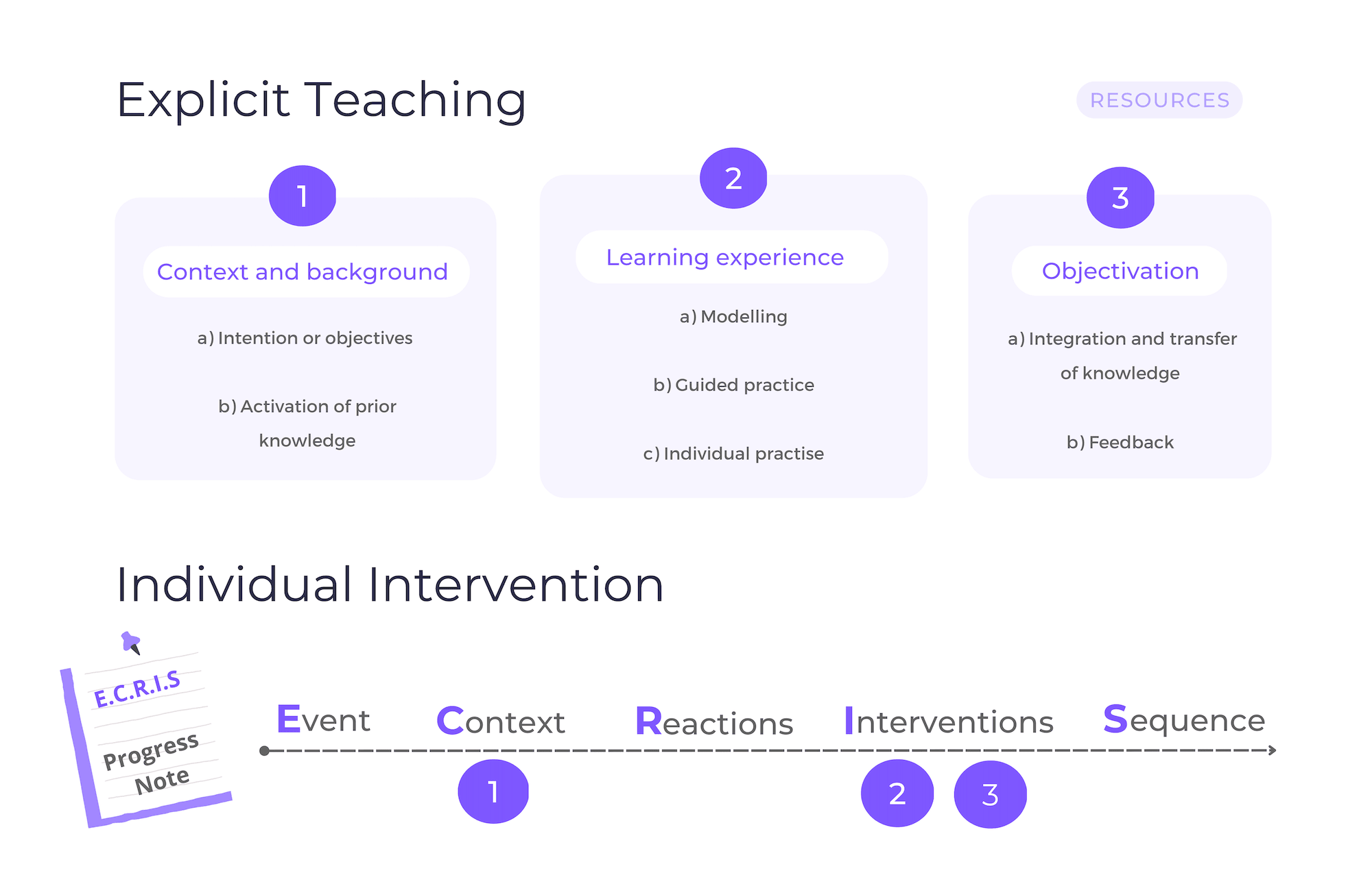Explicit Teaching in Individual Intervention
Explicit teaching and individual intervention are two practices that, when used together, can certainly help students overcome their obstacles and excel. While explicit teaching provides the different steps for carrying out a teaching-learning activity, individual intervention allows the student’s specific needs to be addressed.
The Explicit Teaching Approach
Although the explicit teaching strategy is intended for the classroom, it can also help structure a one-on-one session. Contextualising, going through the learning experience, and taking the time to consolidate are all essential to the basis of education. Explicit teaching is an excellent way to introduce new concepts, reinforce prior comprehension or even counteract a blockage and overcome difficulties. This teaching strategy has been recommended for several years to support students with learning difficulties in reading, writing and mathematics. Feel free to consult this website about learning disabilities to learn more on the subject.

Individual Intervention
Individual intervention allows teachers to give the student specific attention and to use a personalized, supportive and human approach. This reassuring framework enables the student to trust their own pace and to freely express what is and isn’t working. Several strategies for intensification and targeting can then be practiced. When the activity is both explicit and individualized, the positive impact is quickly felt as confidence and competence increase. The student can then progress by developing their own strategies, and the remedial teacher can endeavour to address the student’s needs through differentiation measures.
For planning remedial education sessions and recording progress notes, I would like to suggest the ECRIS model, adapted according to the stages of explicit teaching. The categories allow you to write helpful information concisely according to the meeting format.
- Event: Define the purpose of the activity.
- Context: Establish the context and background.
- Reaction: Observe the student’s response.
- Interventions: Write about the learning experience.
- Sequence: Assess, adjust and agree on the next steps.
Using the explicit teaching model in individual intervention remains a must for me, and it is even more comprehensive when paired with the ECRIS note-taking method. I can then concentrate on the student, taking the time to talk to them to understand what’s going on and identify challenges together. This interaction allows me to model appropriately: to guide them step by step until they are able to move forward on their own.
*For more details and free access to the tools, visit the Drafting guide for meetings in private practice.
**The ECRIS model is a note-taking strategy derived from clinical practice. This model is one of many suggestions. In fact, my colleague Stéphanie wrote a blog about How to Become a Clinical Progress Note Writing Ninja (french only). It provides a few other models.
Happy Reading!
About the author

With over 18 years of experience, Roxanne is a seasoned leader in education and operations. Currently overseeing operations and services at Optania, she has held key leadership roles, including chief executive officer and product specialist. Her career showcases a strong dedication to business management and a deep passion for education.
Roxanne's background as a teacher in special education and orthopedagogy provides her with a unique and valuable perspective in her current positions. This dual expertise has earned her respect in both the education and business sectors.
See all Roxanne Bélanger's postsLatest stories
-
How to Write Clinical Progress Notes: A Complete Guide
-
7 Task Prioritization Techniques for Therapists
-
Art Therapy Activities (with Free PDF)

Manage your professional practice effectively with Psylio
Take notes, schedule appointments, manage your finances, and more—all in one place!